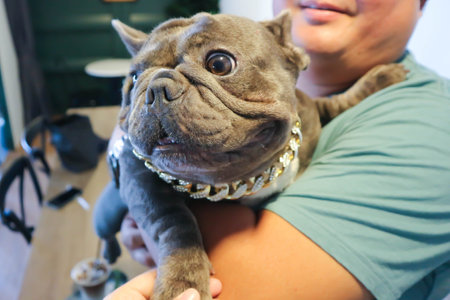1. Understanding Your Cat’s Grooming Anxiety
Many cat owners in the US are familiar with the struggle of trying to groom a kitty that just wants nothing to do with brushes or nail clippers. Before you can help your cat, it’s important to understand why some felines dislike grooming and how their anxiety shows up.
Why Do Some Cats Hate Grooming?
Cats can develop negative feelings about grooming for several reasons. Here are some common triggers:
| Trigger | Description |
|---|---|
| Past Bad Experiences | If your cat has been hurt or scared during previous grooming sessions, they may now associate grooming with stress or pain. |
| Sensitivity | Some cats have very sensitive skin or dislike being touched in certain areas, making brushing uncomfortable. |
| Lack of Socialization | Cats who weren’t exposed to regular handling and brushing as kittens might find grooming unfamiliar and scary. |
| Health Issues | Pain from arthritis, dental disease, or skin problems can make grooming unpleasant or even painful. |
| Loud Noises/Tools | The sound of clippers or even the feeling of a brush can be overwhelming for some cats. |
Signs Your Cat Is Stressed During Grooming
It’s not always obvious when your cat is anxious or fearful. Watch for these signs that your cat is uncomfortable:
- Tense body posture (crouching, tail tucked)
- Growling, hissing, or swatting
- Wide eyes with dilated pupils
- Trying to escape or hide
- Panting or rapid breathing (rare but possible)
- Licking lips or excessive grooming right after brushing attempts
Understanding Your Cat’s Unique Triggers
Every cat is different. Pay attention to which parts of grooming set off your cat most—maybe it’s brushing their belly, hearing scissors snip, or just being held still. Noticing these patterns helps you make future grooming sessions less stressful for both of you.
2. Creating a Calm Grooming Environment
When your cat dislikes being groomed, the right environment can make all the difference. A peaceful, safe space helps reduce stress for both you and your feline friend. Here’s how you can set up an area at home that encourages a more relaxed grooming experience.
Pick the Right Spot
Choose a quiet room away from loud noises and high traffic areas. Avoid spots near appliances like washing machines or TVs that might startle your cat. If possible, select a place where your cat already feels comfortable, like a favorite sunny corner or near their bed.
Gather Your Supplies First
Having everything within arm’s reach helps keep the session smooth and minimizes disruptions. Typical items include:
| Grooming Tool | Purpose |
|---|---|
| Slicker brush or comb | Removes loose fur and prevents mats |
| Nail clippers | Trims claws safely |
| Treats | Rewards and distracts your cat |
| Towel or non-slip mat | Keeps your cat steady and secure |
| Cat-friendly wipes (optional) | Cleans fur gently if needed |
Create Comfort with Familiar Scents
Cats feel safer surrounded by their own scent. Place a blanket or towel that smells like home in your grooming area. You can also use synthetic feline pheromone sprays (like Feliway), which are popular in the U.S. for calming stressed cats.
Lighting and Temperature Matter
Keep the lights soft—bright lights may make some cats nervous. Make sure the room is warm but not too hot, as this helps your cat stay relaxed during the session.
Limit Distractions and Keep It Short
Turn off TVs, music, or anything else that could cause sudden noise. Let other pets hang out elsewhere while you groom. Sessions should be brief at first—just a few minutes—so your cat doesn’t get overwhelmed.

3. Introducing Grooming Tools Gently
If your cat hates being groomed, one of the best ways to help is by introducing brushes and combs slowly and gently. It’s important to make grooming a positive experience so your cat can feel more comfortable over time.
Start with the Right Tools
Not every brush or comb will work for every cat. Some cats prefer soft bristles, while others may tolerate a slicker brush better. Start with tools designed specifically for cats, and consider their fur type when choosing.
| Fur Type | Recommended Tool | Why It Works |
|---|---|---|
| Short-haired | Soft bristle brush | Gentle on skin, removes loose hair |
| Long-haired | Wide-tooth comb or slicker brush | Helps detangle without pulling too much |
| Sensitive skin | Rubber grooming mitt | Mimics petting, less intimidating |
Take Baby Steps with Introduction
Your first goal is not to groom, but simply to get your cat used to seeing and sniffing the grooming tools. Try leaving the brush near their favorite resting spot or offering treats while showing them the tool. This helps build positive associations.
Step-by-Step Guide to Gentle Introduction:
- Let Your Cat Explore: Place the brush nearby during playtime or feeding so it becomes part of their environment.
- Create Positive Pairings: Each time you bring out the brush, reward your cat with a treat or gentle petting if they stay calm.
- Touch Without Brushing: Gently touch your cat with the back of the brush for just a second or two, then offer praise or treats.
- Gradually Increase Contact: Over several days, try short brushing strokes in areas your cat likes being touched (like under the chin or along the back).
- Keep Sessions Short: End each session before your cat shows signs of stress—one or two strokes might be enough at first.
Read Your Cat’s Body Language
If your cat stiffens, flicks their tail, or tries to move away, stop and give them space. Forcing grooming can increase fear and make things harder next time. Instead, go back a step and try again later. Patience is key!
Building Trust Over Time
The goal is slow progress. Celebrate small wins—if your cat lets you brush for just a few seconds today, that’s a big step! With patience and positive reinforcement, even reluctant cats can learn to tolerate and maybe even enjoy grooming sessions.
4. Techniques for Low-Stress Grooming
Make Grooming a Positive Experience
Cats that dislike being groomed often associate the process with stress or discomfort. Turning grooming into a positive, low-pressure activity can make all the difference. Start by introducing grooming sessions gradually and keeping them short—just a few minutes at first. Offer treats before, during, and after each session to help your cat link grooming with good things.
Use Gentle Handling
Always handle your cat gently. Support their body and avoid restraining them tightly, which can increase anxiety. Try petting or scratching their favorite spots while you groom to help them relax. If your cat starts getting agitated, take a break and let them calm down before trying again.
Take Breaks and Watch Your Cat’s Signals
Cats are very sensitive to how they’re feeling in the moment. Pay attention to signs of stress such as tail flicking, ears flattening, or growling. If you notice any of these, pause the grooming and give your cat some space. Gradually work up to longer sessions as your cat becomes more comfortable.
Tips for Low-Stress Grooming Sessions
| Tip | How It Helps |
|---|---|
| Use soft brushes or grooming gloves | Feels less threatening and more like petting |
| Keep sessions short (2-5 minutes) | Prevents overwhelming your cat |
| Reward with treats or playtime | Creates positive associations with grooming |
| Pick quiet times for grooming | Avoids extra stress from noise or activity |
| Let your cat sniff and inspect tools first | Makes the process feel less scary |
| Stay calm and speak softly | Your mood helps keep your cat relaxed |
Try Different Locations and Positions
Some cats prefer to be groomed on your lap, while others feel safer on the floor or even in their carrier. Experiment with different spots to find what works best for your cat. You might also try grooming when your cat is sleepy or after they’ve eaten—times when they’re naturally more relaxed.
5. When to Seek Professional Help
If your cat absolutely refuses grooming or becomes aggressive, it might be time to reach out for professional support. Knowing when to call in a pro can make a big difference for both your cat’s health and your peace of mind.
Signs You Should Consider Professional Assistance
| Behavior or Situation | Who to Call |
|---|---|
| Your cat shows signs of extreme stress (panting, drooling, hiding for hours) | Veterinarian |
| Your cat tries to bite or scratch during grooming, even after gentle attempts | Professional groomer experienced with cats |
| You notice skin issues, wounds, or unusual lumps during grooming | Veterinarian |
| Matted fur that you cannot safely remove yourself | Cat groomer or veterinarian (for severe cases) |
| Your cat has a medical condition making grooming difficult (arthritis, obesity, etc.) | Veterinarian for advice; possibly a specialized groomer |
How Professionals Can Help
- Professional Groomers: Many have experience calming anxious or feisty cats. They use special tools and techniques designed for feline comfort and safety.
- Veterinarians: If health issues are involved, your vet can address underlying problems and may recommend sedated grooming if necessary.
- Mobile Groomers: Some offer house calls, which can reduce stress by letting your cat stay in their familiar environment.
Choosing the Right Professional
Ask friends, neighbors, or your vet for local recommendations. Always check that your chosen groomer has experience with cats—cat grooming is very different from dog grooming!


